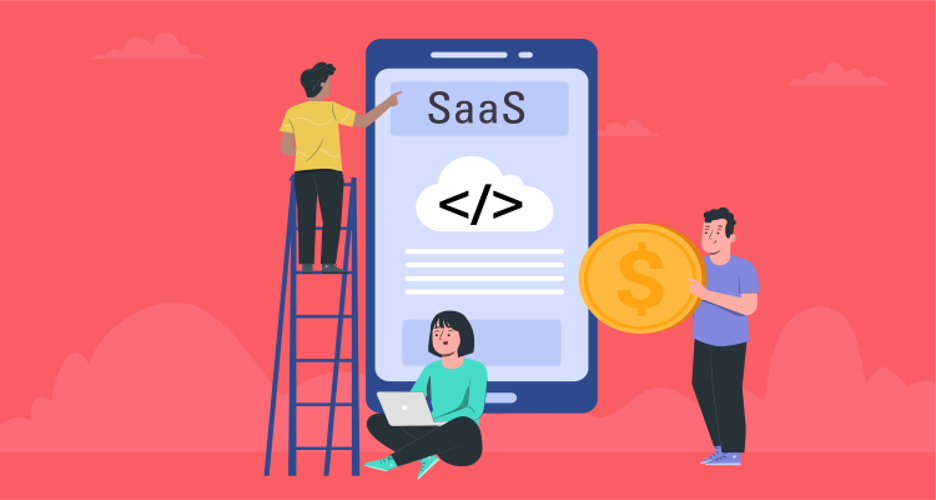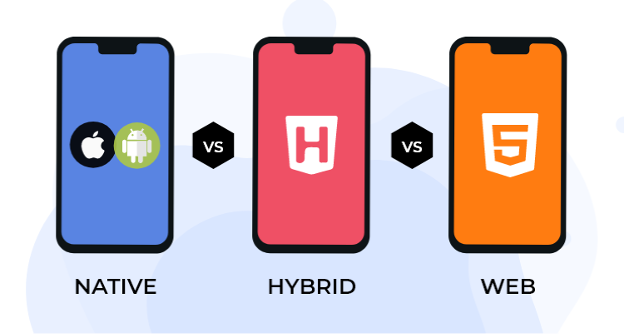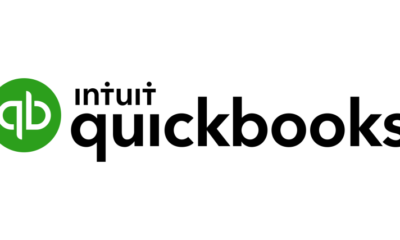93% of global CIOs are shifting to cloud SaaS. Getting your SaaS business on a mobile application has many benefits like easy maintenance, low cost, no tension of system upgrades, zero space usage, etc.
These are the benefits that businesses/customers receive, but there are loads of benefits for SaaS vendors too. SaaS vendors can expand their business to foreign markets, automate service delivery and remove the chances of piracy by integrating SaaS within a mobile app.
As a result of these and many other perks, there is a demand for SaaS products from hundreds of thousands of small and medium-sized businesses globally.
With the advent of smartphone apps, this demand has increased manifold. app development companies have a golden chance to benefit from this massive revenue generation ability.
Follow through with us if you want to know how you can launch a mobile SaaS startup and be an incredible value provider. Let’s start with the basics.
SaaS Defined


SaaS is commonly known as on-demand software. It refers to a software distribution solution centrally hosted on the cloud that people can use via mobile or web.
SaaS service provider creates and launches the model on the cloud, and users use it from there using subscription plans. Users access the software product through a web-based app or an internet browser and only pay for the plan or features they use.
Due to easy accessibility, SaaS has become a sought-after software delivery solution for various business apps. Enterprise software vendors also incorporate it into their delivery strategy.
The market share of products has ballooned, thanks to the popularity of SaaS mobile apps in Dubai.
What Mobile App Should You Choose? Hybrid or Web or Native


Each type of mobile app comes with its perks and drawbacks. So it’s better to explain what each kind means.
Native Apps
Experts say that native applications are the best of all types of apps. This type offers superior quality and performance, as well as provides the enterprise with a direct link to people’s devices.
A native app is an app that users can download from Play Store and offers a direct link to the users’ phone features such as a microphone, camera contact list, and more.
Hybrid Apps
A hybrid application looks like a native app but is a web application that combines both web and native apps. It comprises native UI aspects that let it engage with the device’s built-in apps, something that is usually lacking in web apps.
Web Apps
A web app is an application that users can access through the internet. As it is not a self-supporting app, it isn’t present on the app store or play store. It is dependent on internet connectivity to run.
What Features Do You Wish to Include in Your SaaS App?
Every SaaS mobile app product offers a specific value to users. Therefore, your product should also provide specific features to make it consumer-centric.
Functional Features
A functional feature is the fundamental feature of the SaaS mobile app that addresses a pain point or offers a particular value.
Analytical Features
Once you decide on the essential or functional features, you start thinking about the secondary ones that further amplify the basic features of your mobile application in Dubai. For instance, data usage, screen time by various departments or teams
Management Features
These functions offer the required control and adaptability to the administrative side of your company, like access rights.
When you develop your business SaaS mobile app, you need to devise this group of features after deep thought. Otherwise, your app may lack significant features. However, you should not overwhelm users with futile features either.
If you adopt the freemium pricing model, you should think about features more strategically. Your free version should have features that can complete your enterprise users’ subscription to your SaaS product. And consider what functions of the premium plan can convert them and get them to upgrade.
If your intended product isn’t unique, check out what other similar solutions are offering. Try to come up with far better features than your competitors — that can steal users from them to get a competitive advantage.
In this step, carefully consider your fee structure and payment models. You can opt from these two great revenue models:
Premium Revenue Model
A premium revenue model allows you to charge per feature, per usage limits, per user, or month/year. But, you will need to offer free trials and product demonstrations while promoting to inform your targetted users about what you are offering.
Adobe Photoshop, Adobe Illustrator, and many other Adobe SaaS software are examples of premium solutions.
Freemium Revenue Model
Atlassian, Google, and Zoom use freemium models for their SaaS products. For instance, Google Drive offers free 15 GB of storage.
You can update if you lack storage area on the cloud. You can create payment plans for specific functions, user/month, or limited usage packets.
Many users may question a completely free SaaS product. A 100% free SaaS solution is financially possible but not recommended for large-scope apps. You can offer such a solution for low-scope apps where people use a specific tool online and then see an advertisement, so you make money.
Pick a Software Stack and Make a Development Strategy
Now that you have clarified the type of product you want to create and release. The technical work starts here as you have to pick suitable tools and tech stacks for the app development process.
Many companies get confused at this stage because your technology stack will decide how scalable and user-friendly your app will be. The best solution is to show your project needs to a professional or a mobile app development company and ask for their advice on the right software stack.
Now come to the question of making a development strategy that works. A development strategy involves various corporate and technical standpoints and helps developers and business owners as a roadmap to start or establish the development process.
Make a document and add all critical information to it. You should document the names of platforms and devices your SaaS app will run on, like Android or iphone app development, mobile or desktop browsers, desktop programs, etc.
Additionally, write down the objectives of your product development, software suite, and development team like a designer, project manager, etc. Finally, add your pricing plans, costs, milestones, and timelines of your SaaS app development.
Bottom Line
The most fundamental aspect is to clarify your expectations from your SaaS mobile app. These expectations include the app’s features and design strategy.
Also, choosing the right kind of app (hybrid, native, or web) and the right tech stack is crucial. You should work on user experience design before moving forward with app creation.
If you know how to get it right, you can develop a winning mobile app for your SaaS business and reap all the benefits of SaaS applications.
Must See
-




Entertainment
/ 2 days agoFaveSzn’s Revelation: Dating Choirmaster at 10 and Sexual Curiosity
Nigerian singer, Chidozie Ugochinyere, popularly known as FaveSzn, has revealed that she once dated...
By Flying Eze -




Europe
/ 2 days agoWhy Hungarian Prime Minister Orban visited
Two months later, the leaders of China and Hungary met again. Hungarian Prime Minister...
By Flying Eze -




News
/ 2 days agoThree dead and millions without power as Tropical Storm Beryl hits Texas
Man, 53, and woman, 74, killed by fallen trees and third person drowns amid...
By Flying Eze


